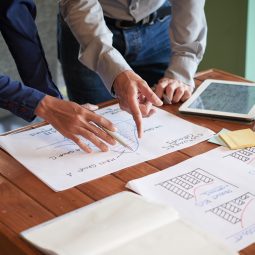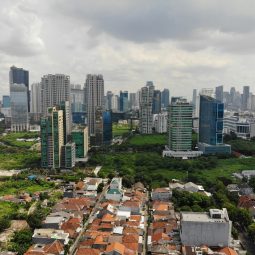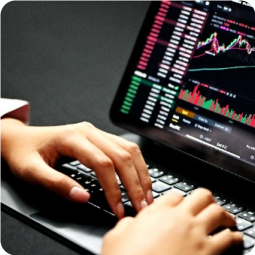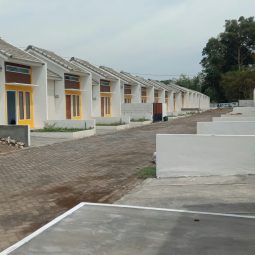When discussing economic growth, the first things that often come to mind are rising GDP, expanding businesses, and increased job opportunities. But does rapid economic growth always equate to sustainable progress?
Sustainability, in essence, refers to a process or condition that can continue indefinitely without depleting resources or harming future generations. In economic terms, this means achieving steady growth without exacerbating social inequalities or overexploiting natural resources.
Thus, the focus should not solely be on improving economic indicators but also on ensuring that progress does not come at the cost of social and environmental balance. This is where green economies, sustainable innovation, and resource efficiency become essential. To explore sustainable economic growth in more depth, the following discussion provides valuable insights.
The Concept of Sustainable Economic Growth

Sustainable economic growth emphasizes the balance of the 3P principles—Profit (economic gains), People (society), and Planet (environment)—ensuring a ‘win-win solution’ between economic progress and environmental preservation.
For example, Indonesia faces significant challenges in maintaining economic sustainability amid increasingly complex environmental issues. The country recorded a 36% increase in Domestic Material Consumption (DMC) in 2023 compared to a decade ago.
Waste generation in Indonesia is projected to reach 82 million tons per year by 2045, with an average of 0.89 kg of waste per person per day. Under a Business-as-Usual scenario, landfills are expected to exceed capacity by 2028 or even sooner.
This highlights Indonesia’s linear economic model, which follows the “take-make-dispose” approach, leading to significant challenges in resource management and waste handling due to increasing domestic material consumption and waste production.
A circular economy offers a solution. This model envisions an endless product life cycle, where materials, resources, and products retain their value for as long as possible—eliminating waste through the zero-waste agenda.
With 68 million Indonesians aged 16-30 (BPS 2024), youth play a crucial role in adopting circular economy principles. Recognizing this, CYCLE (CIRCULAR YOUTH for CIRCULAR ECONOMY) was established with a vision of youth as the driving force behind a sustainable, inclusive, and environmentally friendly economy.
The circular economy can be implemented through the 5R principles:
- Reuse: Extending product life by using items multiple times.
- Reduce: Minimizing resource consumption and waste.
- Recycle: Transforming used materials into new products.
- Repair: Restoring and fixing damaged goods to extend usability.
- Recovery: Processing waste into energy or other valuable resources.
By embracing these strategies, Indonesia can transition from a linear to a circular economy, ensuring long-term economic growth that benefits both people and the planet.
Discover more : 10 Key Macroeconomic Indicators to Understand
3 Core Pillars of Sustainable Economy
Sustainability in any aspect inevitably impacts natural resources and the environment. The consequences of sustainable development extend across the economic, social, and environmental sectors, forming the three fundamental pillars of sustainable economic growth.
These pillars—environmental, social, and economic sustainability—are collectively known as ESG (Environmental, Social, and Governance). Each pillar plays a crucial role in ensuring that economic growth is not solely driven by financial gains but also takes into account broader social and environmental impacts.
Economic Dimension
This pillar focuses on creating a stable and resilient economic system while reducing dependence on natural resources. It seeks to balance economic growth, social equity, and financial stability.
A study by The Global Commission on the Economy and Climate (2018) found that transitioning to a low-carbon economy could generate $26 trillion in global economic benefits over two decades. Investment in green technology and infrastructure can drive long-term economic growth.
Here are some areas that will improve:
1. Productivity and Efficiency
Maximizing output by using resources such as labor, capital, and raw materials optimally, ensuring nothing goes to waste.
For example, using modern technology to increase agricultural yields without expanding land or labor. The goal is to drive economic growth without straining the environment or significantly raising costs.
2. Long-Term Stability
Financial stability aims to maintain a balance between income, expenses, and investments to ensure the continuity of individuals, companies, or countries over time.
For instance, Indonesia only takes loans to build infrastructure that generates revenue. By maintaining financial stability, the economy can withstand external pressures while continuing to support sustainable development.
Social Dimension
Social management emphasizes building communication and interaction among individuals and groups. Through positive and sustainable social interaction, significant impacts on sustainable economic growth can be achieved.
Social sustainability also focuses on human and community welfare, promoting equality, human rights, access to education and healthcare, and decent employment.
The goal of social sustainability is to create an inclusive society, reduce inequalities, and ensure long-term well-being for all while maintaining social cohesion and justice.
1. Reducing Social Inequality
This involves creating a fairer and more inclusive society, meaning that all individuals have equal access to opportunities, resources, and basic services.
Social inequality often arises from differences in economic status, which lead to unequal distribution of resources such as education, healthcare, and employment. Therefore, it is crucial to reduce these disparities to prevent societal divisions.
For example, the Indonesian government implemented the Family Hope Program (PKH), which provides conditional cash transfers to low-income families to improve access to education, healthcare, and child nutrition.
2. Improving Community Welfare
This refers to creating conditions where society can meet its basic needs, such as education, healthcare, employment, and housing. The aim is to enhance the overall quality of life.
For instance, improving access to education through free or subsidized education programs ensures that everyone, including the poor, can receive quality education.
Environmental Dimension
The environmental dimension refers to managing existing resources and utilizing their potential to develop valuable and competitive assets that can contribute to the well-being of society.
Environmental sustainability is influenced by several factors that can significantly impact ecological balance and the planet’s ability to support life. Some of the key factors include:
- Air, water, and soil pollution
- Climate change, caused by the excessive release of greenhouse gases into the atmosphere from human activities
- Loss of biodiversity
- Over-exploitation of natural resources
- Economic models that involve unsustainable consumption
By implementing sustainable economic growth, negative environmental impacts can be reduced, such as minimizing the damage caused by human activities to ecosystems, natural resources, and overall environmental quality. An example of this is mangrove forest rehabilitation to protect coastal ecosystems.
Additionally, promoting the use of renewable energy—shifting from non-renewable fossil fuels (such as coal, oil, and natural gas) to renewable, eco-friendly sources (such as solar, wind, and geothermal)—is essential.
This approach also aims to reduce greenhouse gas emissions that drastically alter the climate, while ensuring long-term energy availability.
Benefits of Sustainable Economic Growth

Economically, sustainable practices can create a healthier, safer, and more productive environment. Here are some benefits of sustainable economic growth:
1. Resilience Against Crises
Sustainable economies tend to be more resilient to both global and domestic economic shocks. Economic diversification and increased productivity can reduce dependence on a single sector.
Stable economic growth is usually accompanied by controlled inflation, providing certainty for economic actors.
2. A Favorable Investment Climate
Sustainable economic growth attracts investment both domestically and internationally. This encourages the inflow of new capital that can be used to develop businesses and create jobs.
Incoming investments can foster the development of new sectors, particularly those focused on technology and innovation.
3. Efficient Resource Management
Sustainable economic growth also requires the prudent management of natural resources to prevent over-exploitation. By adopting more eco-friendly technologies and enforcing strict regulations, economic growth can align with a reduction in pollution levels.
4. Improving the Welfare of Future Generations
Sustainable economic growth aims to achieve inclusive growth, so its benefits can be felt by all layers of society. By reducing inequality between the rich and poor, social stability can be maintained, with long-term positive impacts on future generations.
In conclusion, sustainable economic growth is essential for creating a balance between economic progress, environmental preservation, and social welfare. By fostering stable economic growth, we can ensure a better future for the next generations. Sustainable growth is the key to equitable, stable, and environmentally friendly development.
To support sustainable growth, Arghajata Consulting is ready to help you plan the right strategies for guiding your company towards a more sustainable future. Contact us for further consultation!

















